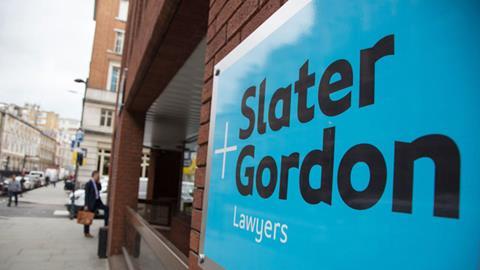Troubled Australian firm Slater and Gordon is talking to anonymous new lenders about a deal which it said could lead to its survival as a going concern. An announcement to the Australian Stock Exchange this morning disclosed that 94% of the company's debt had been sold to 'secondary debt buyers' which 'intend to implement a solvent restructure of the company'.
This would involve a 'debt for equity lender scheme of arrangements' which the announcement said 'is in the best interests of all stakeholders'.
The intention is 'to enter into binding agreements to reset its debt structure to ensure that the company has a sustainable level of debt and a stable platform for its future operations both in Australia and the UK,' the statement said.
The business has bank debts of A$738m (£458m). Original lenders including National Australia Bank, Westpac, RBS and Barclays are reported to have sold off their debt to distressed debt buyers for as little as 22 cents in the dollar.
The announcement boosted the company's share price, which shot up by 46% to 13 Australian cents (8p). Two years ago the company was trading at around A$8 (£5).
Australian media responses were mixed: the Herald Sun said banks had 'abandoned' the firm and quoted one analyst who warned the deal had the potential to leave shares 'virtually worthless'. The Australian Financial Review quoted debt market sources saying this was a 'clear statement of intent' the business will be stabilised and avoid entering administration'.
A stock market analyst at The Motley Fool Australia commented: 'Slater & Gordon is in a weak to non-existent bargaining positioning against the kind of US hedge fund creditors that are known for playing hardball. It’s likely then that the terms of the “restructure” could include a debt-for-equity swap whereby so much new equity was issued in Slater & Gordon (in exchange for writing off up to say A$700 million of debt) that current equity holders are all but wiped out. For example the value of the traded equity in Slater & Gordon at the moment is only around A$40 million, or around 1/18th of its outstanding bank debt.
'A debt-for-equity swap is one option, but I expect the law firm will also be trying to negotiate a restructure of the debt to lengthen repayment obligations and possibly to have credit extended by its new creditors. This would be a good result for the firm and shareholders as it may give it time to get back on its feet without the current equity holders in the business being taken to the cleaners alongside the banks.'
The scale of the task facing Slater and Gordon was outlined last month when the firm posted half-year losses of £262m and wrote off UK business worth £216m. Slater and Gordon’s board said it had presented recapitalisation options to lenders and added it had ‘reason to believe that a successful outcome will be concluded in the coming months’, although a majority of lenders by value had to agree to a satisfactory recapitalisation plan by 26 May.
The firm has struggled since admitting accounting errors and completing the ill-fated deal to buy the Professional Services Divison of Quindell.



























33 Readers' comments